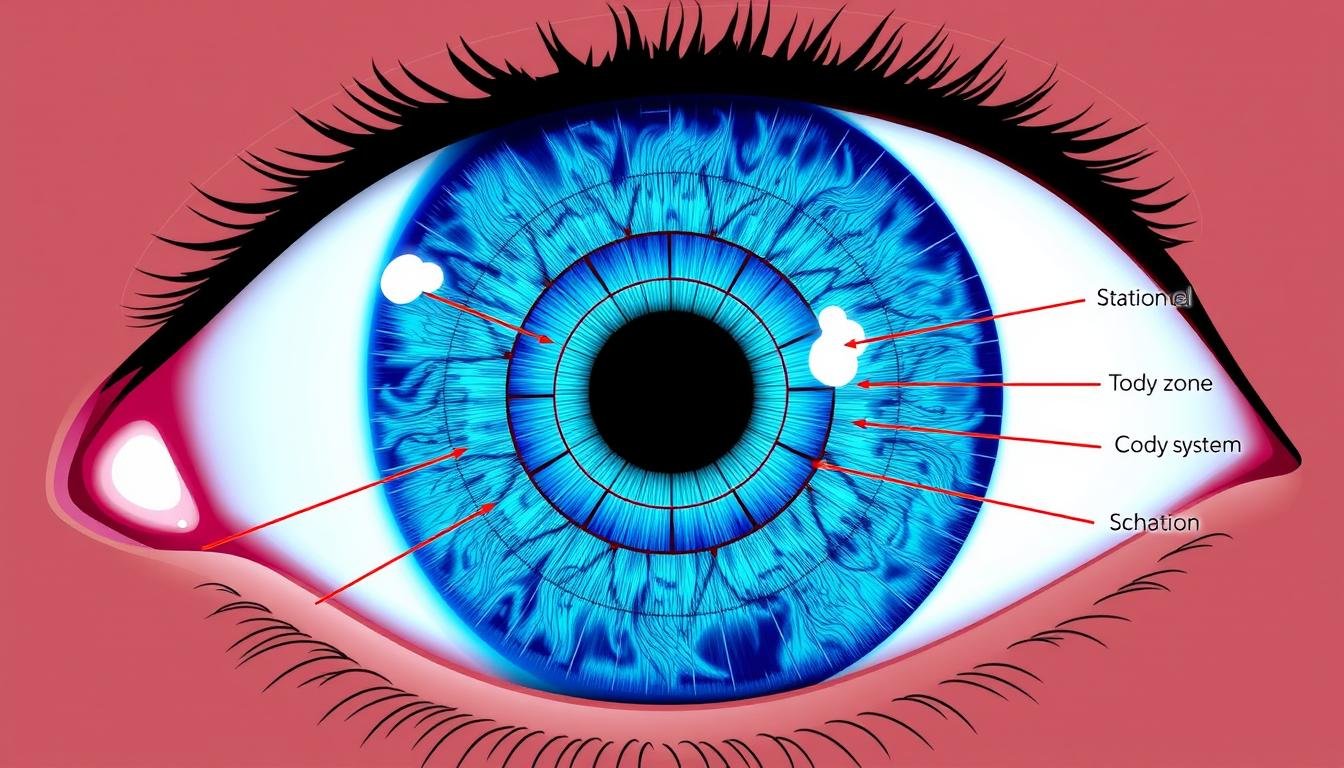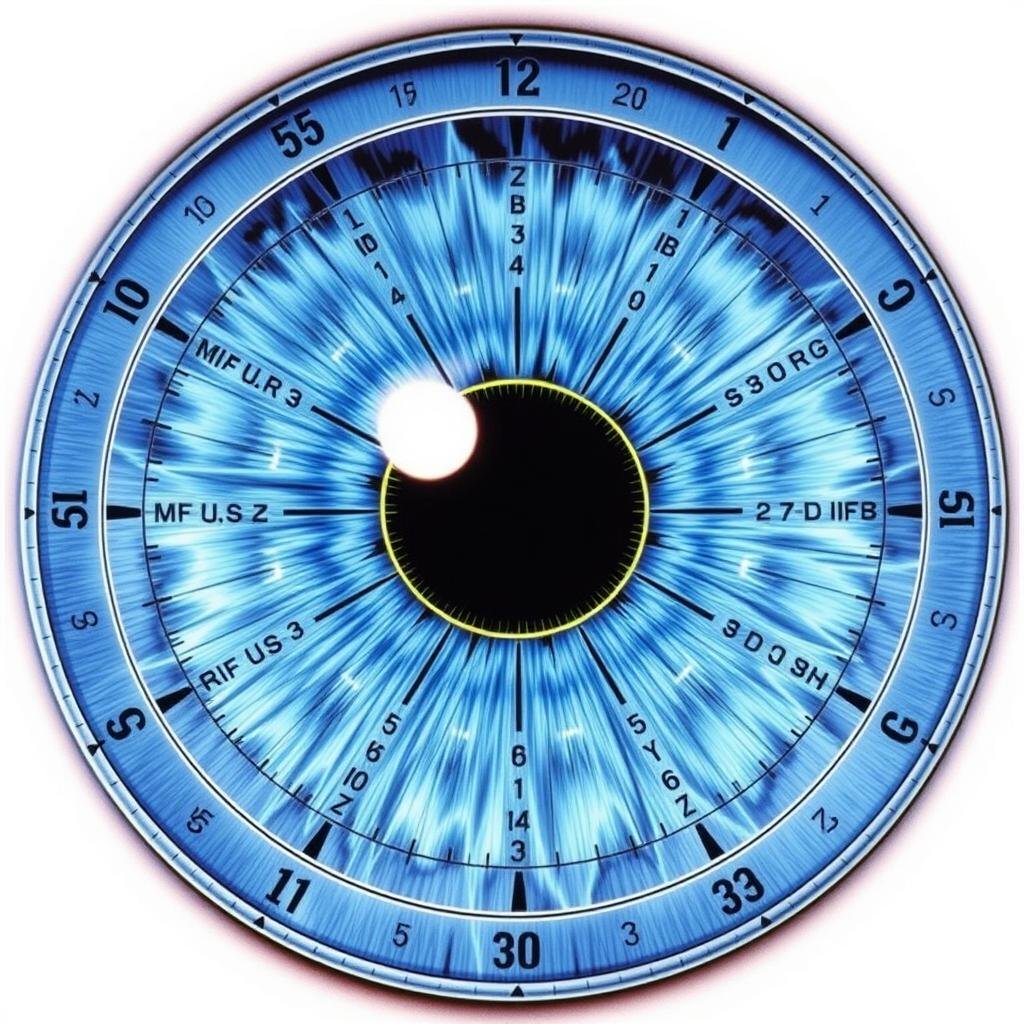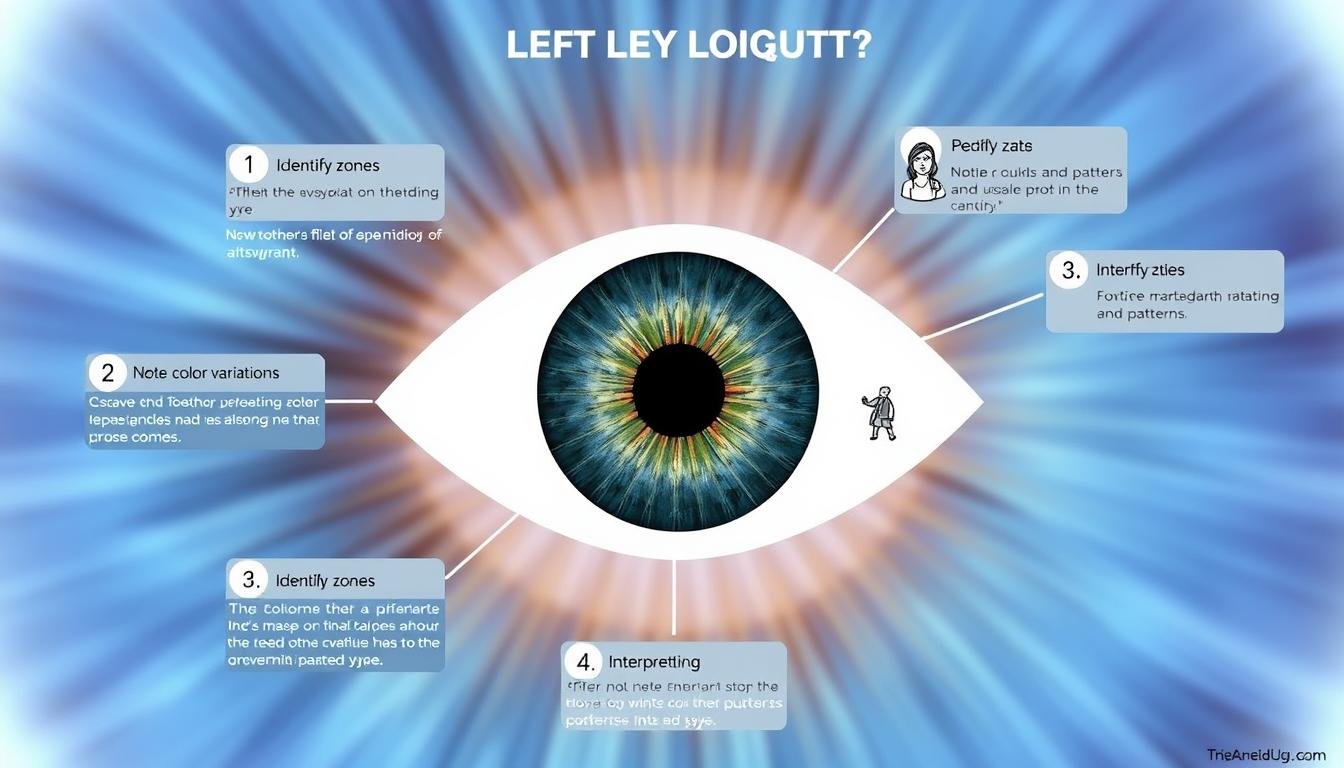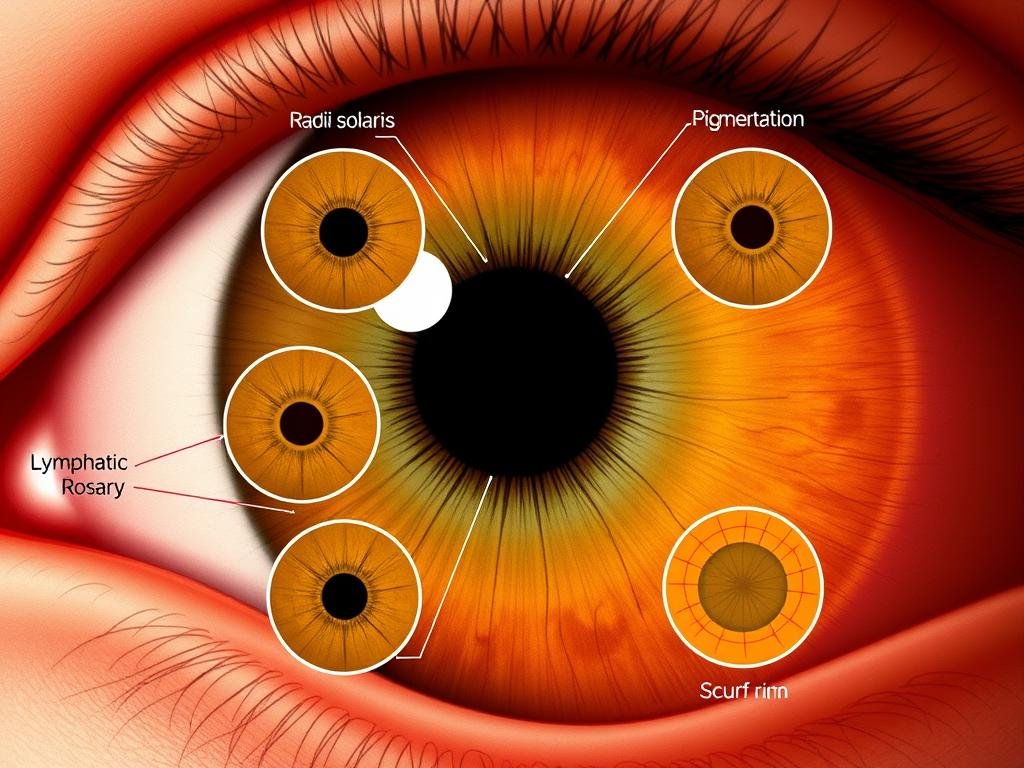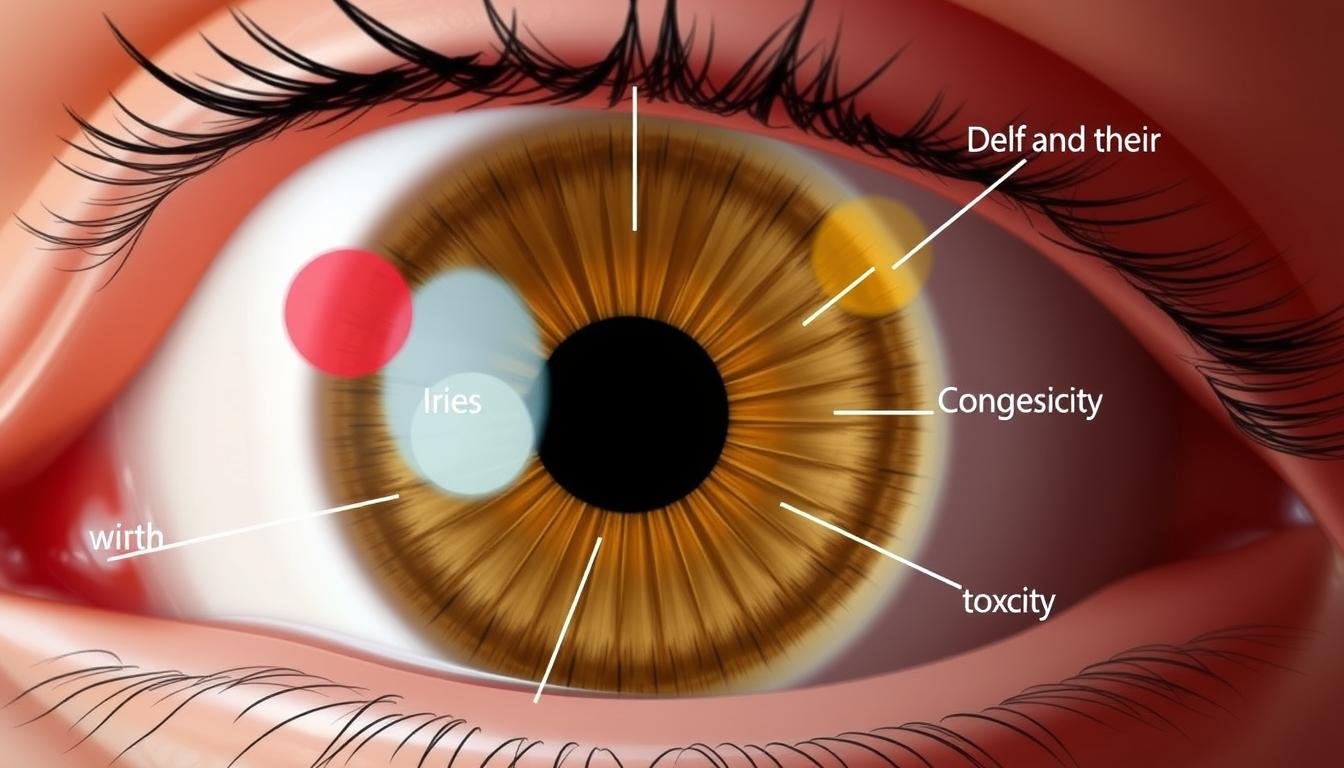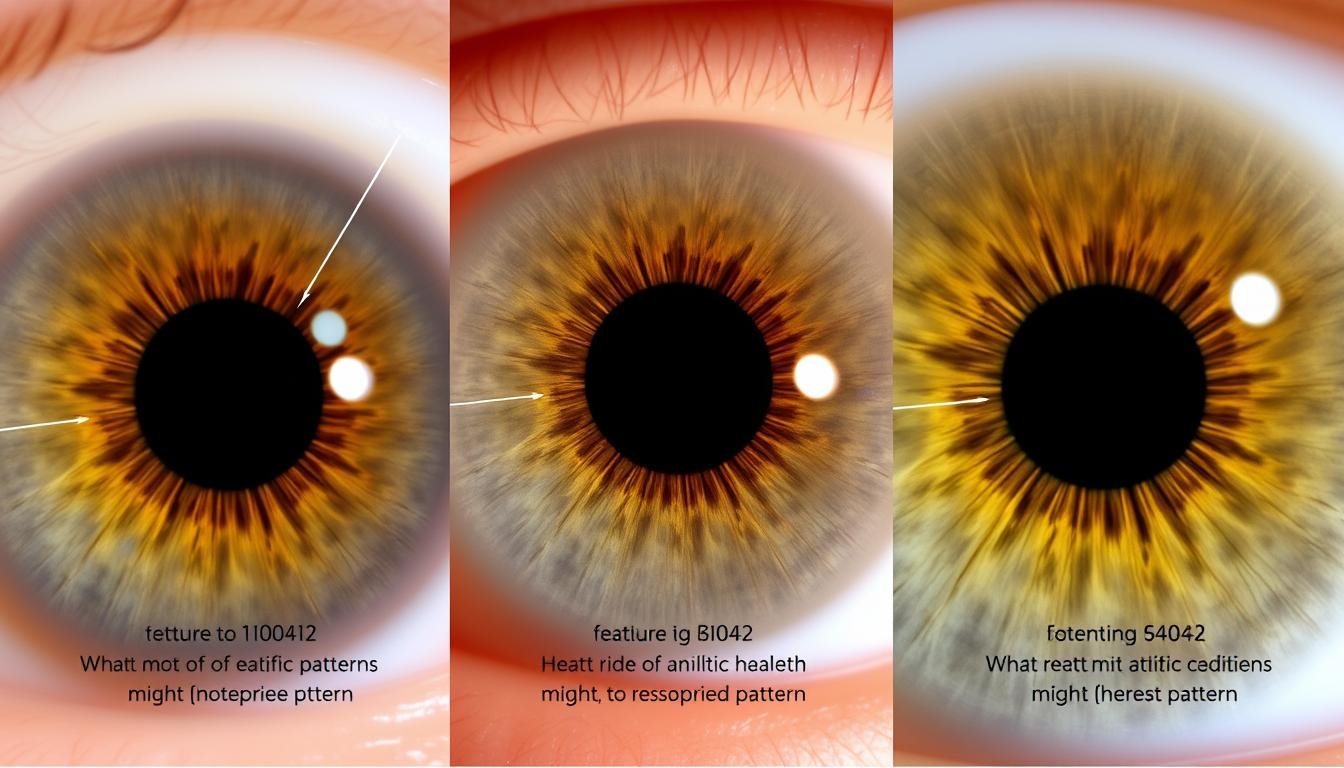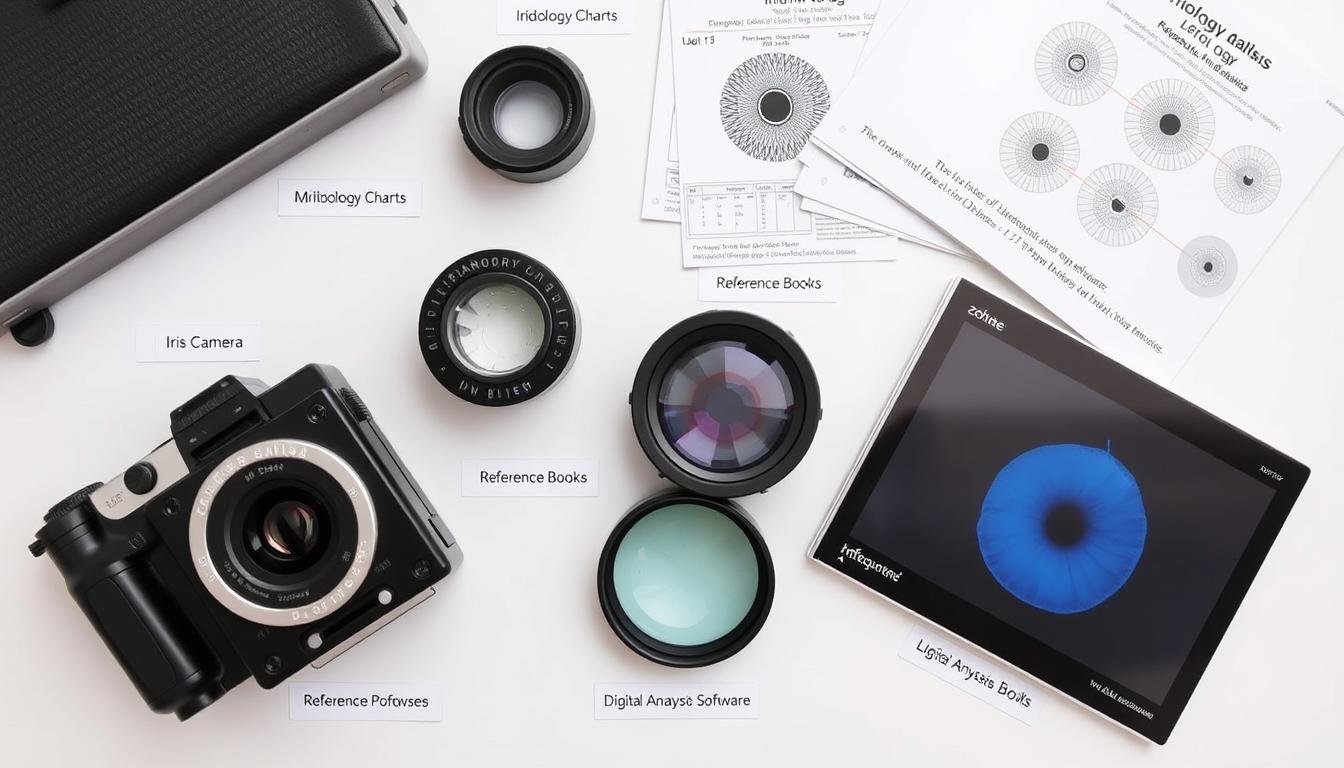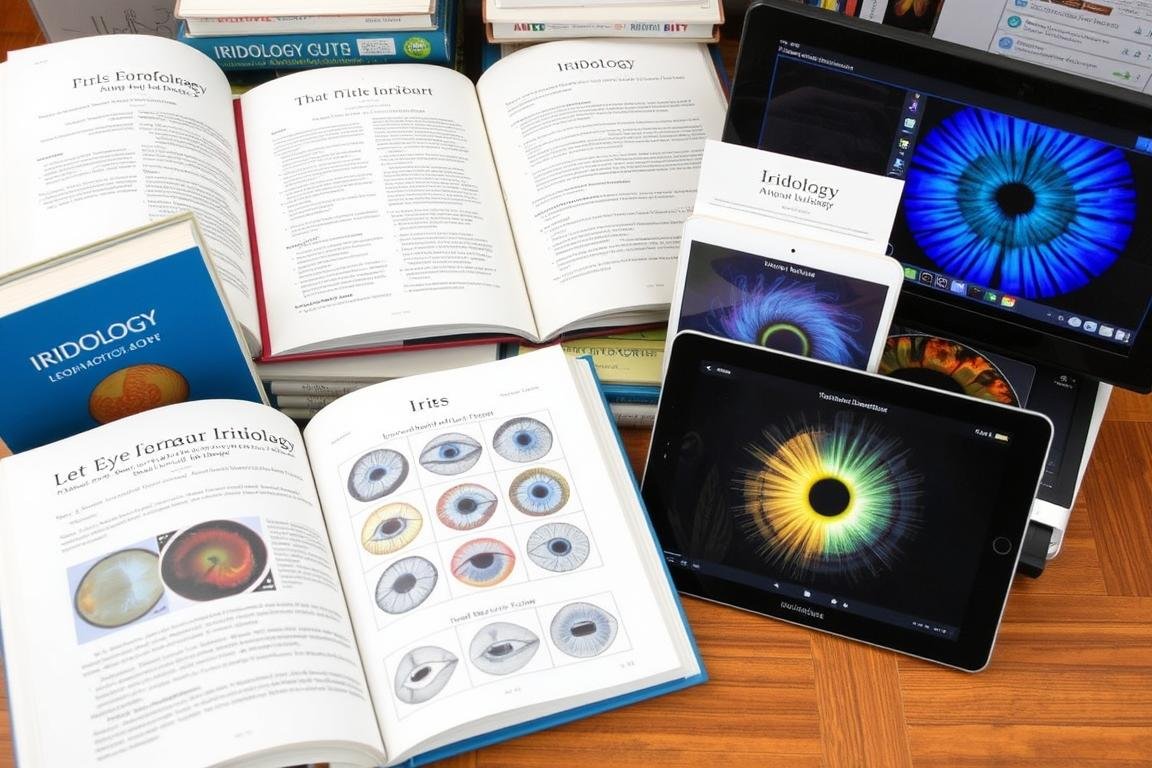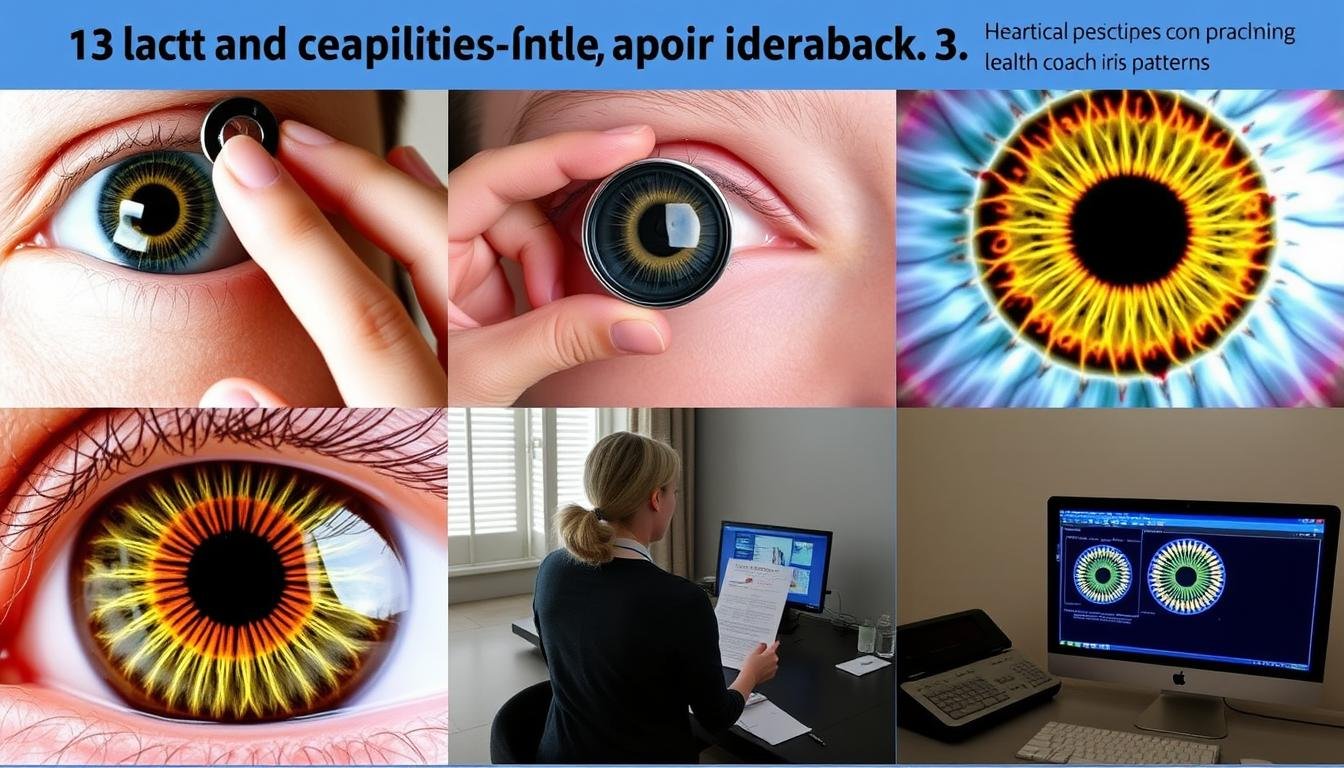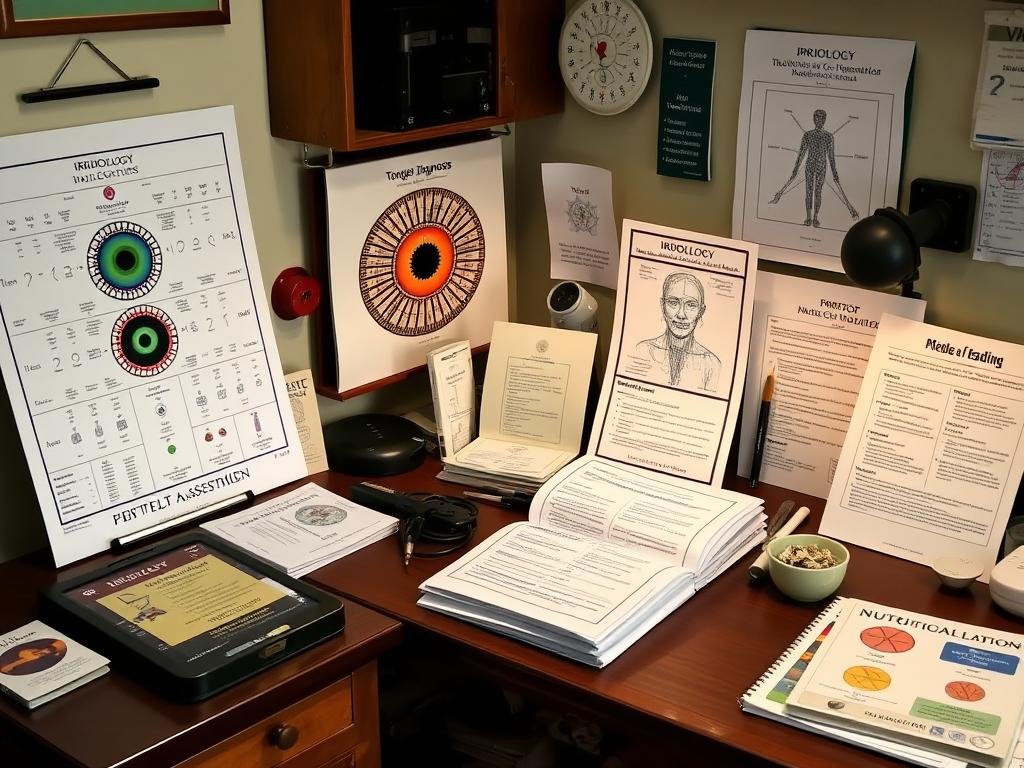The human iris contains remarkable patterns unique to each individual. These intricate designs have fascinated practitioners of alternative medicine for centuries. The Gráfico de iridologia do olho esquerdo serves as a specialized map that correlates specific zones of the left iris to various organs and systems on the left side of the body. This comprehensive guide explores the principles, history, and practical applications of left eye iridology mapping, providing you with the knowledge to understand this fascinating field.

What Is a Gráfico de iridologia do olho esquerdo?
UM Gráfico de iridologia do olho esquerdo is a specialized diagnostic tool used in the practice of iridology. It divides the left iris into multiple zones, each corresponding to specific organs and systems primarily on the left side of the body. Practitioners believe that changes in iris texture, color, and markings can indicate potential health issues in the corresponding body areas.
Unlike general iridology charts that cover both eyes, the left eye chart focuses specifically on organs and systems that manifest in the left iris. This includes the spleen, stomach, heart, left kidney, and left reproductive organs. The chart typically presents a circular diagram with radiating sections, resembling a clock face divided into zones.
Master Iridology Interpretation
Download our comprehensive Gráfico de iridologia do olho esquerdo with detailed zone explanations and interpretation guide.
Baixe o gráfico gratuito
Historical Origins of Iridology and Zone Mapping
The practice of iridology has roots dating back to ancient civilizations, but its modern development began in the 19th century. Dr. Ignaz von Peczely, a Hungarian physician, is often credited as the father of modern iridology. As a child, he reportedly noticed changes in an owl’s iris after the bird suffered a broken leg, sparking his lifelong study of iris patterns and their correlation to health.
In the early 20th century, American chiropractor Bernard Jensen further developed iridology charts, creating detailed mappings that are still referenced today. Jensen’s work specifically distinguished between left and right eye interpretations, establishing the foundation for specialized left eye iridology charts.
Key Historical Developments in Gráfico de iridologia do olho esquerdo Mapeamento
| Período de tempo | Key Figure | Contribution to Left Eye Iridology |
| 1860s | Dr. Inácio de Peczely | First systematic iris charts distinguishing left from right |
| 1950 | Bernardo Jensen | Detailed zone mapping specific to left eye correlations |
| década de 1970 | Dorothy Hall | Enhanced left eye charts with emotional and psychological components |
| 1990-presente | Various Practitioners | Digital enhancement and standardization of left eye charts |
Anatomical Zones in the Gráfico de iridologia do olho esquerdo
O Gráfico de iridologia do olho esquerdo divides the iris into concentric rings and radial zones. Each zone corresponds to specific body systems and organs, primarily on the left side of the body. Understanding these zones is essential for proper interpretation of iris signs.
Major Zones in the Gráfico de iridologia do olho esquerdo
Upper Zones (10-2 o’clock)
- Circulação cerebral e cerebral
- Pituitary and pineal glands
- Sinus cavities and upper respiratory
- Left side of head and face
Right Zones (2-4 o’clock)
- Coração
- Left Lung and Bronchi
- Tireóide e paratireóide
- Lymphatic system (upper)
Lower Right Zones (4-6 o’clock)
- Baço
- Estômago
- Pâncreas
- Left adrenal gland
Lower Zones (6-8 o’clock)
- Small intestine
- Colon (descending)
- Rim esquerdo
- Órgãos reprodutivos esquerdos
Lower Left Zones (8-10 o’clock)
- Left hip and leg
- Lymphatic system (lower)
- Circulation (lower extremities)
- Left side of skeletal system
Concentric Ring Zones
- Pupillary zone: Digestive system
- Collarette: Autonomic nervous system
- Ciliary zone: Muscular and skeletal systems
- Peripheral zone: Skin, circulation, lymphatics
Enhance Your Iridology Practice
Get our detailed zone-by-zone interpretation guide for the left eye iris. Perfect for practitioners and enthusiasts alike.
Download Zone Guide
How to Read and Interpret the Gráfico de iridologia do olho esquerdo
Interpreting a Gráfico de iridologia do olho esquerdo requires understanding both the zone locations and the various markings, colors, and patterns that may appear. Here’s a systematic approach to reading these charts effectively.
Step-by-Step Interpretation Process
- Observe the overall iris: Note the basic constitution type (lymphatic, biliary, hematogenic) and dominant color.
- Examine the pupil: Check for size, shape, and any irregularities that might indicate autonomic nervous system issues.
- Assess the collarette: This ring separates the pupillary zone from the ciliary zone and represents the digestive system.
- Scan each zone systematically: Move clockwise around the iris, noting any markings in each zone.
- Identify specific markings: Look for lesions, lacunae, crypts, pigmentations, and other signs.
- Correlate findings with body systems: Use the Gráfico de iridologia do olho esquerdo to connect iris signs with corresponding body areas.
Common Iris Signs and Their Meanings in Left Eye Iridology
| Sinal de íris | Aparência | Indicação potencial |
| Lacuna | Closed or open dark areas | Inherent weakness or lesion in corresponding organ |
| Raio solar | Linhas semelhantes a raios irradiando para fora | Toxic condition or elimination channel stress |
| Pigmentação | Brown or dark spots | Chemical deposits or drug accumulation |
| Rosário linfático | White dots forming a ring | Congestão do sistema linfático |
| Anéis nervosos | Circular lines around the iris | Nervous tension or stress response |
| RIM SCURF | Dark ring at iris periphery | Skin elimination issues |
Common Health Indicators in the Left Iris
The left iris can reveal potential health conditions related to organs and systems primarily on the left side of the body. While iridology is considered complementary rather than diagnostic, practitioners observe specific patterns that may indicate areas of concern.
Specific Health Indicators by Zone in the Gráfico de iridologia do olho esquerdo
Digestive System Indicators
- Stomach Zone (4-5 o’clock): White markings may indicate hyperacidity
- Pancreas Area (5 o’clock): Dark markings might suggest pancreatic stress
- Intestinal Zone (6-7 o’clock): Crypts could indicate absorption issues
Circulatory System Indicators
- Heart Zone (2-3 o’clock): Radii solaris may indicate circulation stress
- Lymphatic Ring: White cloudy appearance suggests lymphatic congestion
- Spleen Area (4 o’clock): Dark markings might indicate blood filtration issues
Nervous System Indicators
- Brain Zone (12-1 o’clock): Nerve rings may suggest nervous tension
- Coroa de Nervos Autônomos: Irregularities could indicate stress response issues
- Spinal Nerves (3 and 9 o’clock): Markings might suggest nerve impingement
“The left iris primarily reflects conditions of organs on the left side of the body, with particular emphasis on the spleen, stomach, heart, and left kidney. These correlations follow the traditional Chinese medicine concept of organ relationships.”
– Dr. Bernard Jensen, Pioneiro da Iridologia Moderna
Compare Left & Right Eye Patterns
Download our comparative analysis tool to understand the differences between left and right eye iridology interpretations.
Get Comparison Guide
Case Studies Using the Gráfico de iridologia do olho esquerdo
Examining real-world applications of left eye iridology can provide valuable insights into how practitioners use these charts. The following case studies illustrate the practical application of Gráfico de iridologia do olho esquerdo interpretation.
Estudo de caso 1: Avaliação do sistema digestivo
A 42-year-old female presented with chronic digestive complaints. The Gráfico de iridologia do olho esquerdo examination revealed distinct markings in the stomach and intestinal zones (4-7 o’clock positions). Specifically, white cloudy areas in the stomach zone (4-5 o’clock) suggested hyperacidity, while darker markings in the intestinal area indicated potential absorption issues.
Case Study 2: Cardiovascular Evaluation
A 58-year-old male with a family history of heart disease showed significant radii solaris (spoke-like lines) in the heart zone (2-3 o’clock) of his left iris. According to left eye iridology principles, these markings suggested circulatory stress. The practitioner also noted a lymphatic rosary (white dots forming a ring), potentially indicating systemic inflammation.
Estudo de caso 3: Padrões de resposta ao estresse
A 35-year-old individual experiencing chronic fatigue showed multiple nerve rings (circular lines) throughout the left iris. In Gráfico de iridologia do olho esquerdo interpretation, these rings often correlate with nervous system stress. Additional markings in the adrenal zone (5 o’clock) suggested potential adrenal fatigue contributing to the overall condition.
Observação: These case studies are provided for educational purposes only. Iridology is considered a complementary approach and should not replace conventional medical diagnosis. Always consult qualified healthcare professionals for medical concerns.
Perspectiva científica sobre iridologia
While iridology has a dedicated following among alternative health practitioners, it’s important to understand the scientific community’s perspective on this practice. The Gráfico de iridologia do olho esquerdo and its interpretations have been subject to scientific scrutiny.
Research and Evidence
Scientific studies examining iridology have produced mixed results. A 1979 study published in the Journal of the American Medical Association found that iridologists could not consistently identify patients with kidney disease by examining photographs of their irises. Similar studies have questioned the reliability of iridology as a diagnostic tool.
However, proponents point to research suggesting correlations between certain iris features and predispositions to specific health conditions. Some studies in Russia and Germany have shown potential connections between iris patterns and constitutional tendencies.
Argumentos de apoio
- A íris contém milhares de terminações nervosas conectadas ao cérebro
- Some iris changes have been documented in response to certain conditions
- Traditional medicine systems worldwide recognize eye-body connections
- May serve as a complementary assessment tool
Perspectivas críticas
- Limited peer-reviewed research supporting specific claims
- Controlled studies have shown inconsistent results
- Os padrões da íris são amplamente determinados pela genética
- May delay seeking conventional medical diagnosis
“While the scientific community remains skeptical about many iridology claims, there is value in studying traditional observational practices. The detailed attention to subtle bodily changes that iridology encourages can complement other health assessment approaches.”
– Journal of Integrative Medicine Review, 2018
Aplicações Práticas do Gráfico de iridologia do olho esquerdo
Beyond theoretical understanding, the Gráfico de iridologia do olho esquerdo has several practical applications for those interested in holistic health assessment. Here are some ways practitioners and individuals use these charts in real-world settings.
Self-Assessment Using the Gráfico de iridologia do olho esquerdo
Many individuals use basic iridology principles for personal health monitoring. With a good quality mirror, adequate lighting, and a reference Gráfico de iridologia do olho esquerdo, you can observe changes in your own iris over time. While self-assessment shouldn’t replace professional healthcare, it can increase body awareness and prompt timely consultations when changes are noticed.
Simple Self-Assessment Steps:
- Stand in natural light or use a bright, diffused light source
- Use a magnifying mirror to examine your left iris in detail
- Compare what you see with a reference Gráfico de iridologia do olho esquerdo
- Document any notable markings, colors, or patterns
- Track changes over time in a health journal
Complementary Health Assessment
Holistic health practitioners often use left eye iridology as one component of a comprehensive health assessment. By integrating iris analysis with other evaluation methods like health history, physical examination, and lifestyle assessment, practitioners can develop a more complete picture of an individual’s health status and tendencies.
Importante: Iridology should be used as a complementary tool, not as a primary diagnostic method. Always consult qualified healthcare professionals for medical diagnosis and treatment of health conditions.
Conclusão: o valor de Gráfico de iridologia do olho esquerdo Análise
O Gráfico de iridologia do olho esquerdo offers a unique perspective on health assessment through the careful observation of iris patterns, colors, and markings. While scientific validation remains limited, many practitioners and individuals find value in this traditional approach to understanding body systems and potential health tendencies.
Whether you’re a healthcare practitioner looking to expand your assessment tools or an individual interested in holistic health approaches, understanding the principles of left eye iridology can provide additional insights into overall wellbeing. The key is to approach this practice with both an open mind and critical thinking, using it as a complementary tool rather than a standalone diagnostic method.
As with any health practice, education, proper training, and ethical application are essential. By learning to properly interpret the Gráfico de iridologia do olho esquerdo and understanding its limitations, you can add another dimension to your holistic health toolkit.
Aprofunde seu conhecimento em Iridologia
Access our complete library of iridology resources, including specialized left eye charts, interpretation guides, and video tutorials.
Explore Full Resource Library
Perguntas frequentes sobre Left Eye Iridology Charts
What’s the difference between left and right eye iridology charts?
O Gráfico de iridologia do olho esquerdo primarily corresponds to organs and systems on the left side of the body, with special emphasis on the spleen, stomach, heart, and left kidney. The right eye chart focuses on the right-side organs, particularly the liver, gallbladder, and right kidney. Some systems, like the brain and intestines, appear in both charts but with different aspects represented in each eye.
Is the Gráfico de iridologia do olho esquerdo scientifically valid?
The scientific community generally considers iridology to have limited evidence supporting its diagnostic claims. Controlled studies have shown mixed results, and mainstream medicine does not typically incorporate iridology in clinical practice. However, some practitioners find value in it as a complementary assessment tool when used alongside other health evaluation methods.
How long does it take to learn to interpret a Gráfico de iridologia do olho esquerdo?
Basic understanding of the Gráfico de iridologia do olho esquerdo zones can be achieved in a few weeks of dedicated study. However, developing proficiency in accurately interpreting iris signs typically requires several months to years of practice and preferably formal training. Many professional iridologists complete certification programs that include supervised clinical practice.
Can I practice iridology at home using a Gráfico de iridologia do olho esquerdo?
Yes, basic self-assessment is possible with proper tools (good lighting, magnifying mirror) and reference charts. However, accurate interpretation requires training and experience. Home practice should focus on observing and tracking changes rather than attempting to diagnose specific conditions. Always consult healthcare professionals for medical concerns.
Os padrões de íris mudam com o tempo?
The basic structure and color of the iris remain relatively stable throughout life. However, iridologists believe that certain markings, pigmentations, and subtle color changes can occur in response to health changes. Scientific research has not conclusively verified these claims, as most studies indicate iris patterns are largely determined by genetics and remain consistent after early childhood.



